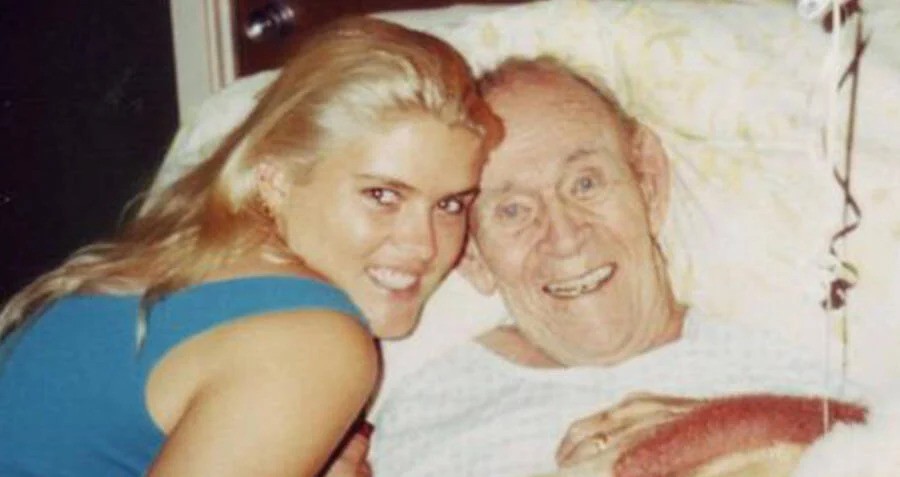
In the 1980s, Corey Feldman and Corey Haim were among the era’s biggest teenage actors. Sharing the same first name and a close friendship, they co-starred in several hit films, including The Lost Boys. However, their bond extended beyond their screen credits; they also faced the darker aspects of Hollywood together, allegedly as victims of a purported ring of pedophiles.

Both Coreys turned to drugs during their teen years, but Corey Haim’s struggles with addiction were particularly severe. At just 18, he entered rehab for a crack cocaine addiction, yet maintaining sobriety proved difficult. As he aged and his acting opportunities dwindled, Haim relapsed and experienced multiple overdoses.
By the mid-2000s, Haim lived with his mother in an apartment near Burbank, where he eventually passed away in 2010. Although his death was ruled to be from natural causes, the pervasive impact of his prolonged battle with drug addiction loomed heavily over his tragic end.
Corey Haim’s Rise To Fame
Corey Ian Haim was born on December 23, 1971, in Toronto, Canada, to Judy and Bernie Haim. After his parents divorced in 1982, Haim moved with his mother to Willowdale. A naturally shy child, Haim’s mother enrolled him in drama, improvisation, and mime classes to help him come out of his shell.
These classes proved effective. While accompanying his sister Carol to auditions, Haim caught the attention of producers, who offered the 10-year-old a role in the educational comedy series The Edison Twins.
Although the show only aired for two years, from 1984 to 1985, it marked the beginning of Corey Haim’s career and established him as a rising star, according to the New Zealand Herald.

Shortly afterward, Corey Haim was cast in the thriller Firstborn alongside Peter Weller. At 13, Haim portrayed a boy living with his mother’s violent boyfriend, played by Weller, who was a method actor. On their first day of filming, Haim complimented Weller on his performance, but Weller responded by screaming at him and throwing him against a wall. It took three assistants to separate them.
Though Weller later apologized, explaining that his reaction was due to his method of acting, the incident left Haim terrified and had a lasting impact on him.
Corey Haim Becomes Acquainted With Hollywood’s Dark Side
The young actor persevered, landing roles in several notable films, including Secret Admirer, Murphy’s Romance, and Stephen King’s Silver Bullet.
However, his breakout role arrived with 1986’s Lucas, where he portrayed the titular character alongside Kerri Green, Charlie Sheen, and Winona Ryder. In the film, 14-year-old Lucas falls for an older cheerleader played by Kerri Green—a crush that reportedly extended beyond the screen. Though unreciprocated, Haim’s real-life feelings for Green fueled his performance, as he later revealed.
It turned out well for him, as film critic Roger Ebert noted in his review of the performance: “He creates one of the most three-dimensional, complicated, interesting characters of any age in any recent movie. If he can continue to act this well, he will never become a half-forgotten child star, but will continue to grow into an important actor. He is that good.”
Regrettably, Haim began drinking regularly during the filming of Lucas, even indulging on set.
In 1987, Haim secured his next major role in The Lost Boys alongside his soon-to-be best friend, Corey Feldman. It was around this time that he tried marijuana for the first time, and as his career flourished, so did his dependence on drugs.

“I lived in LA in the 1980s, which was not the best place to be,” Haim later said of his substance use. “I did cocaine for about a year and a half, then it led to crack.”
In 1988, while filming License to Drive with Heather Graham and Corey Feldman, Corey Haim reached a breaking point, admitting he had lost control of his drug addictions. A year later, at 18, he entered rehab, acknowledging that he had become “out of whack.” At one of his lowest moments, Haim was even asking high schoolers where he could buy crack.
Feldman, too, was known for his drug use, engaging in heavy marijuana consumption and participating in “coke-off” challenges with friends, vying to see who could do the most lines of cocaine and stay awake the longest.
Later, Feldman would write about his own experiences growing up as a young actor in 1980s Hollywood, shedding light on the alleged sexual abuse that both he and Corey Haim endured.
Accusations Of Sexual Abuse In 1980s Hollywood
In his autobiography Coreyography, Corey Feldman disclosed being molested by older men in the entertainment industry for years. He also revealed that Corey Haim confided in him with similar experiences early in their friendship, forging a deep bond rooted in mutual trauma.
Although Feldman later spoke to People Magazine about the abuse, he made the decision not to disclose names to protect Haim’s mother from further anguish.
“There are people that did this to me and Corey that are still working, they’re still out there and they’re some of the most rich and powerful people in this business. And they do not want what I’m saying right now. They want me dead,” Feldman expressed.

Feldman later released a documentary film titled My Truth*:* The Rape of Two Coreys, delving further into the alleged abuse he and Haim endured. Among the startling revelations was Haim’s alleged disclosure to Feldman that Charlie Sheen raped him on the set of Lucas. At the time, Sheen would have been 19, and Haim just 13. Sheen’s publicist denied the allegation.
However, Haim’s mother contested this claim during a 2017 appearance on The Dr. Oz Show, asserting that it was not Sheen but rather actor Dominick Brascia who assaulted her son (Feldman had also accused Brascia of abusing Corey Haim in the documentary). Brascia denied the allegations.
The Coreys’ Troubled Childhoods Come To Light
In the years preceding Corey Haim’s death, there were hints at the allegations that Corey Feldman would later reveal. In 2007, while starring alongside Feldman in the A&E reality series The Two Coreys, Haim addressed the “rape incident” directly, suggesting that his assailant was an acquaintance of Feldman’s.
“I have come to terms with this a long time ago, but obviously not [totally],” he later shared. “Stuff happens when you are a kid, it scars you inside for life.”
As young teenagers, the two Coreys led extravagant lives and frequently attended numerous parties. They were especially known for hosting a weekly event for underage guests called Alphy’s Soda Pop Club—a place where Hollywood’s young stars could party unsupervised.
Later, Feldman claimed that several high-level Hollywood pedophiles would visit the Soda Pop Club and allegedly rape and intimidate teenage actors. While Haim never directly addressed these allegations of sexual abuse, he did speak about how the environment of the Soda Pop Club contributed to his struggles with addiction.
“By the end, it was dying out and everyone was on drugs,” he said. “I was on drugs, Feldman was on drugs. At the end of it, we were 16 or 17 years old!”
Unfortunately, Corey Haim never managed to overcome his addictions, which led him into a downward spiral of debt, isolation, and desperation.
The Events Leading Up To Corey Haim’s Death
By the early 2000s, Corey Haim’s career had dried up, leading him to file for Chapter 11 bankruptcy. During what he later described as an “eight-year hiatus,” the actor retreated from public view, battling “an addiction to pretty much everything.”
In 2001, Haim was hospitalized twice for drug-related issues. During the second incident, his mother discovered him unconscious in his Los Angeles home.
Facing mounting medical bills and financial woes, Haim resorted to a desperate measure: attempting to sell his teeth and hair on eBay. However, eBay promptly blocked this attempt, as the site prohibits the sale of human body parts.
Just three years later, Haim had relocated to an apartment with his mother, yet his downward spiral persisted due to his ongoing drug addiction. In 2007, he made another attempt at rehab, but upon completing the program, just two years prior to his death, Haim referred to himself as “a chronic relapser.”
“I guess I always will be,” he said.
The Death Of Corey Haim

On March 10, 2010, Corey Haim was discovered deceased in the apartment he shared with his mother.
CNN reported in May of that year that Haim’s death had been attributed to pneumonia, not drugs. Despite initial suspicions of an overdose, toxicology tests indicated “no significant contributing factors” from drugs, according to the coroner’s report.
Instead, the autopsy revealed “an extremely large amount” of swelling in Haim’s lungs. Further toxicology tests indicated “low levels” of several drugs in his blood, including a cough suppressant, antihistamine, ibuprofen, Prozac, Olanzapine, Valium, Carisoprodol, meprobamate, and THC.
The autopsy concluded that while the medications were “present in low levels,” they were “non-contributory to death.”
Corey Haim passed away at the age of just 38
If you enjoyed this story or article, make sure to share it with your beloved friends and follow Cat's Voice for more heartwarming content & Videos!






